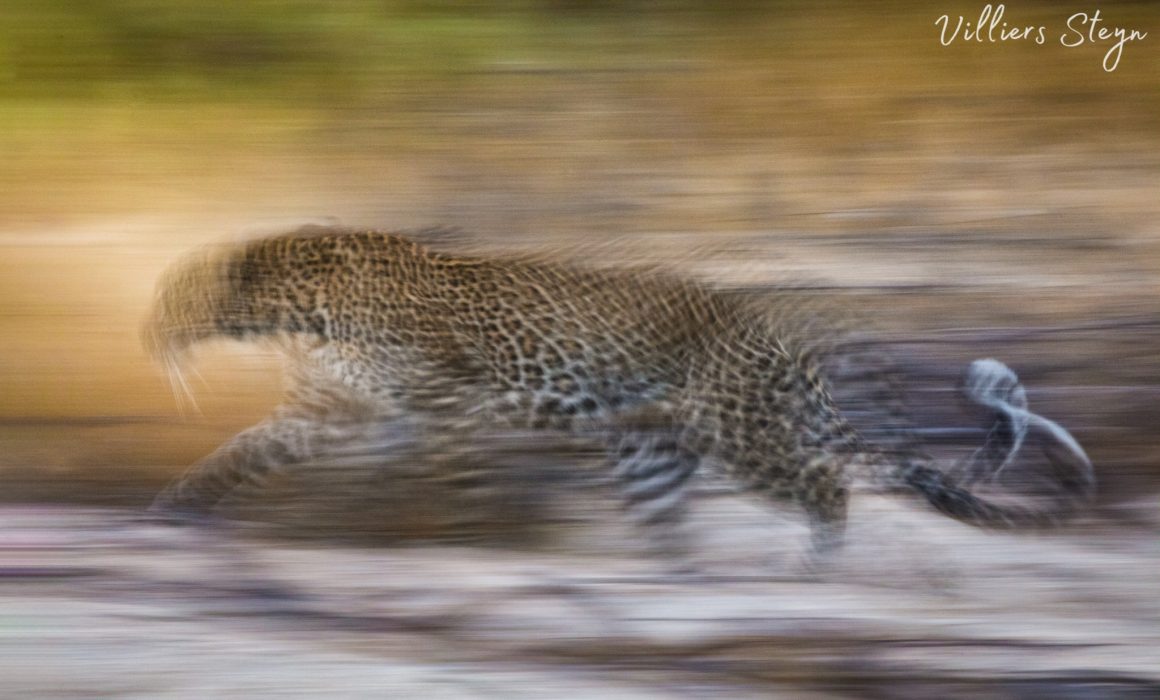Panning In Photography (Leopard Panning Image – Chitwa Chitwa, Sabi Sands)
Camera: Canon 5DmkIV
Lens: Canon 100-400mm II
Settings: Tv 1/4sec | f/25 | ISO 3200
“While on a Zali Photo photographic safari at Chitwa Chitwa early one morning, we came across a young leopardess called Langa right outside camp. The sun hadn’t even poked its head above the horizon yet, so we were getting extremely slow shutter speeds even at high ISO’s, making it impossible to get sharp photos of the active cat. So, I decided to take a few panning shots instead and because she was walking slowly, as opposed to trotting or running, I had to choose an extremely slow shutter speed – a fourth of a second in this case. The faster the animal is moving, the faster your shutter speed has to be, but it’s seldom faster than 1/50sec when you’re panning wildlife.
Panning shots are extremely difficult to get for various reasons: First of all, most animals we find on game drives either stand still or move erratically. For a panning shot to work, the subject needs to move at a constant speed, be it slow or fast. Secondly, the animal needs to walk perfectly parallel to you, which seldom happens out in the field. Another thing that’s important, is the light. Panning shots only work in dark or overcast conditions, otherwise your images will over-expose because of the slow shutter speeds. Lastly, even if you have all the right conditions, you still need to perfect the panning technique of moving the lens at the same speed as the animal while keeping it nicely composed and in focus. And don’t forget – you have to press the shutter while you’re doing all of this!
These are the kind of creative techniques I will teach you when you join me on a Zali Photo photographic safari.”
Villiers Steyn | The Safari Expert


